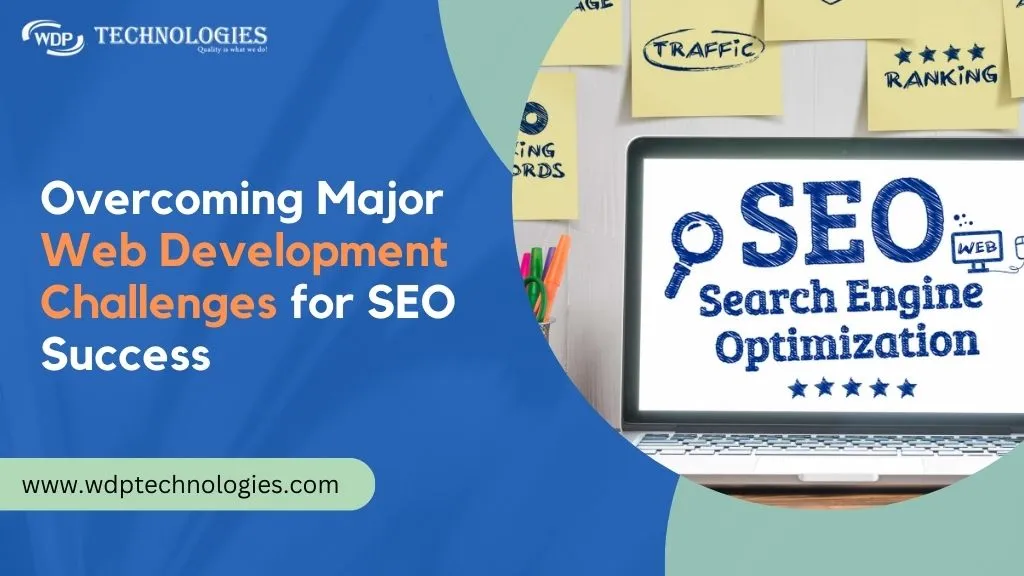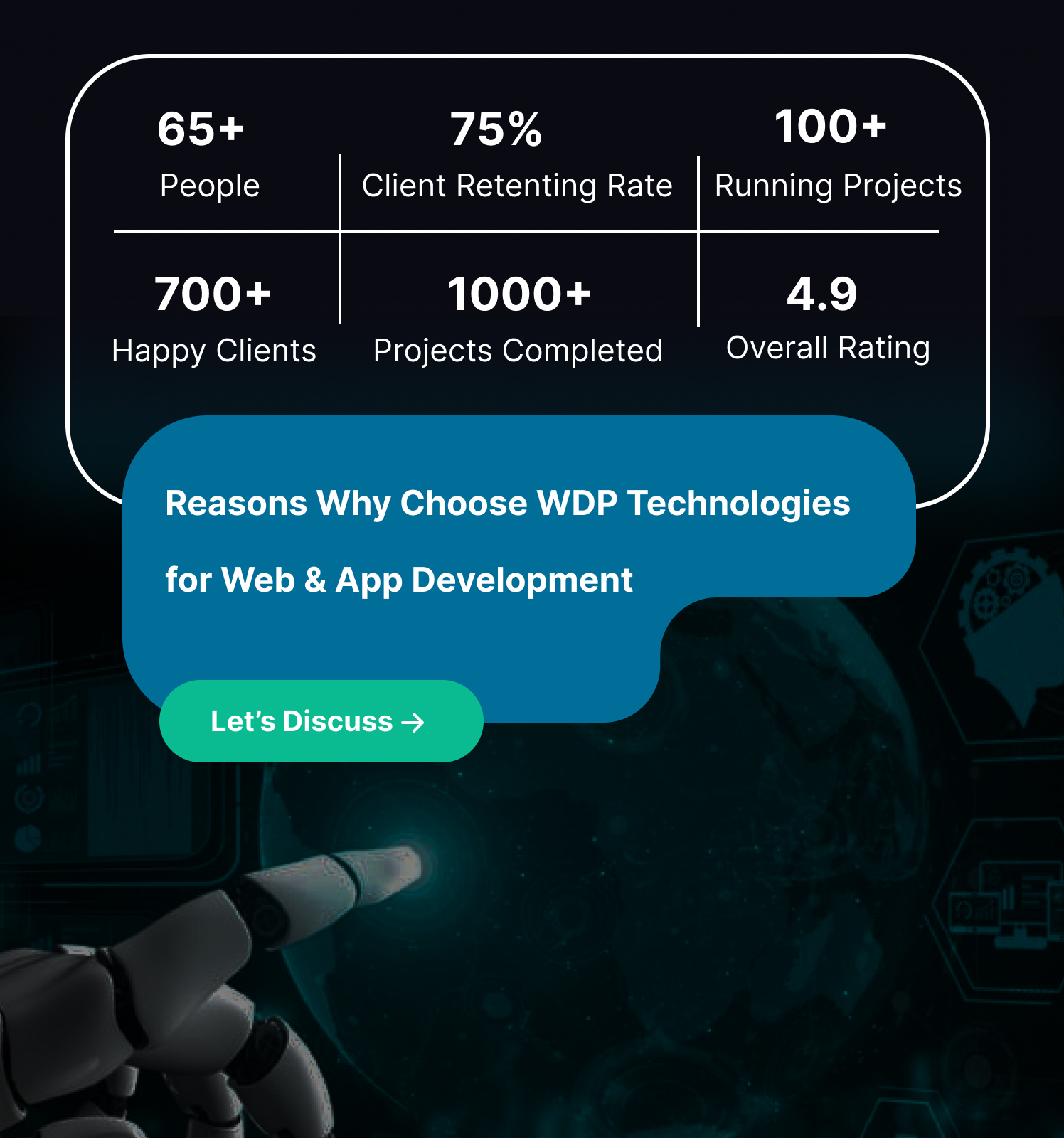In the fast-paced digital landscape, web development plays a pivotal role in shaping a successful online presence. However, it’s not without its share of challenges, especially when it comes to optimizing your website for search engines (SEO). This blog post explores the major web development challenges that can impact SEO and provides comprehensive solutions to overcome them.
Major Web Development Challenges for SEO Success
By addressing these challenges, you can ensure that your website not only ranks well on search engines but also delivers an exceptional user experience.
1. Mobile Responsiveness:
Challenge:
With the ever-increasing use of smartphones and tablets, having a mobile-responsive website is no longer optional. Neglecting mobile optimization can lead to a poor user experience and lower search engine rankings.
Solution:
To address this challenge, implement a responsive web design. This means creating a website layout and structure that can adapt seamlessly to various screen sizes and devices. CSS media queries are invaluable tools for achieving this responsiveness. By using media queries, you can define different CSS styles for different screen sizes, ensuring that your website looks and functions perfectly on smartphones, tablets, and desktops.
2. Website Speed:
Challenge:
Website loading speed is not just about user convenience; it’s also a crucial factor in SEO rankings. Slow-loading websites can frustrate users and lead to higher bounce rates, which, in turn, can negatively impact your search engine rankings.
Solution:
Improving website speed is imperative for SEO success. Consider the following strategies:
- Compress Images: Large images can significantly slow down your site. Use image compression tools to reduce file sizes without compromising quality.
- Enable Browser Caching: Browser caching stores elements of your website on a user’s device, reducing loading times for returning visitors.
- Use Content Delivery Networks (CDNs): CDNs distribute your website’s content across multiple servers, reducing the physical distance between the user and the server, thereby speeding up content delivery.
- Minimize HTTP Requests: Reduce the number of requests your website makes to the server by combining multiple files, minimizing unnecessary plugins, and using asynchronous loading for scripts.
Regularly monitor your website’s performance using tools like Google PageSpeed Insights, which provides recommendations for further speed improvements.
3. SEO-Friendly URL Structure:
Challenge:
Unoptimized URLs with convoluted strings and parameters can confuse both search engines and users, making it challenging to achieve high search engine rankings.
Solution:
Creating an SEO-friendly URL structure is essential for effective SEO. Follow these guidelines:
- Descriptive and Clean URLs: Craft URLs that provide a clear indication of the content on the page. Include relevant keywords and use hyphens to separate words.
- Avoid Unnecessary Parameters: Keep URLs concise and avoid excessive query parameters. Use a canonical tag to specify the preferred version of a page if multiple URLs point to the same content.
A user-friendly URL structure not only benefits SEO but also enhances user experience and helps users understand the content they’re about to access.
4. Content Management and SEO:
Challenge:
Maintaining a substantial amount of content while ensuring it’s SEO-friendly can be a daunting task. Without proper content management, your SEO efforts may fall short.
Solution:
Effective content management is key to SEO success. Consider the following steps:
- Content Management Systems (CMS): Utilize a CMS like WordPress, Drupal, or Joomla to streamline content creation, organization, and publishing.
- SEO Plugins/Extensions: Install SEO plugins or extensions specific to your CMS. These tools simplify on-page optimization, including meta tags, sitemaps, and canonical URLs.
- Regular Content Updates: Continuously update and optimize your content with relevant keywords and meta tags. This keeps your website fresh and relevant in the eyes of search engines.
A well-structured content management system, combined with SEO best practices, ensures that your content not only engages visitors but also ranks well on search engines.
5. Duplicate Content:
Challenge:
Duplicate content, whether unintentional or malicious, can result in SEO penalties and confusion for search engines.
Solution:
Mitigating the impact of duplicate content is crucial for SEO. Here’s how to tackle it:
- Canonical Tags: Implement canonical tags to specify the preferred version of a page when multiple URLs point to the same content. This informs search engines which version should be indexed.
- 301 Redirects: Use 301 redirects to consolidate duplicate URLs. Redirecting all duplicate versions to a single, canonical URL ensures that search engines index the correct page.
- Regular Monitoring: Utilize tools like Google Search Console to regularly check for duplicate content issues and address them promptly.
By proactively addressing duplicate content issues, you can maintain a strong SEO presence and avoid potential penalties from search engines.
6. Security Concerns:
Challenge:
In an era of increasing cybersecurity threats, a breach can not only harm your website’s SEO but also damage your reputation.
Solution:
Prioritizing website security is vital for both user trust and SEO. Follow these security best practices:
- SSL Certificates (HTTPS): Secure your website with SSL certificates to enable secure connections (HTTPS). Google considers HTTPS a ranking factor and displays warnings for unsecured sites.
- Regular Updates: Keep your website’s software, plugins, and themes up to date to patch vulnerabilities. Most content management systems offer automatic updates for security purposes.
- Strong Password Policies: Enforce strong password policies to prevent unauthorized access.
- Web Application Firewall (WAF): Consider implementing a Web Application Firewall (WAF) to protect against common web application attacks like SQL injection and cross-site scripting (XSS).
By maintaining a secure website, you not only protect your SEO efforts but also safeguard sensitive user data.
7. Structured Data Markup:
Challenge:
Structured data helps search engines understand your content better, but implementing it can be complex for web developers.
Solution:
Leverage structured data markup to provide search engines with valuable information about your content. Follow these steps:
- Schema Markup: Utilize schema.org markup to define structured data for your content. Schema.org provides a standardized vocabulary that search engines can interpret.
- Structured Data Markup Helper: Google offers the Structured Data Markup Helper to simplify the process. Use this tool to generate structured data code for your website.
By implementing structured data markup, you enhance the appearance of your content in search engine results and improve its visibility.
8. User Experience (UX):
Challenge:
A poor user experience can lead to high bounce rates, decreased engagement, and lower search engine rankings.
Solution:
Prioritize user experience to ensure your website’s success. Here are some key considerations:
- User-Friendly Design: Craft a user-friendly design with clear navigation and intuitive layout.
- Fast Loading Times: Optimize for speed to reduce bounce rates. Implement strategies like image compression and browser caching.
- Usability Testing: Conduct usability testing to gather user feedback and make continuous improvements.
A great user experience not only keeps visitors engaged but also signals to search engines that your website provides value.
9. Mobile-First Indexing:
Challenge:
Google has shifted to mobile-first indexing, meaning it primarily uses the mobile version of your website for ranking and indexing. Neglecting mobile optimization can hurt your SEO.
Solution:
Ensure that your mobile version is not just responsive but also mirrors the content and functionality of the desktop version. Test your website thoroughly on various mobile devices to guarantee a seamless user experience.
10. Technical SEO Issues:
Challenge:
Technical SEO involves optimizing behind-the-scenes elements like meta tags, sitemaps, and structured data. Neglecting technical SEO can hinder your website’s performance in search results.
Solution:
Conduct regular technical SEO audits to identify and address issues. Consider the following steps:
- Use SEO Tools: Leverage tools like Screaming Frog or Google Search Console to identify technical SEO issues.
- Address Errors: Fix issues such as broken links, missing meta tags, XML sitemap errors, and mobile usability problems.
- Stay Informed: Keep up with search engine algorithm changes to adapt your technical SEO strategy accordingly.
By paying attention to technical SEO, you ensure that your website is well-optimized for search engines.
Read More: Real Challenges in Mobile App Development
Conclusion:
Web development is an ongoing process, and these major challenges are integral to SEO success. By addressing mobile responsiveness, website speed, SEO-friendly URL structures, content management, duplicate content, security concerns, structured data markup, user experience, mobile-first indexing, and technical SEO issues, you create a solid foundation for your website to rank well on search engines, attract organic traffic, and deliver a positive user experience. Prioritizing these aspects will help you navigate the evolving landscape of web development and SEO effectively, ensuring your website’s long-term success.












